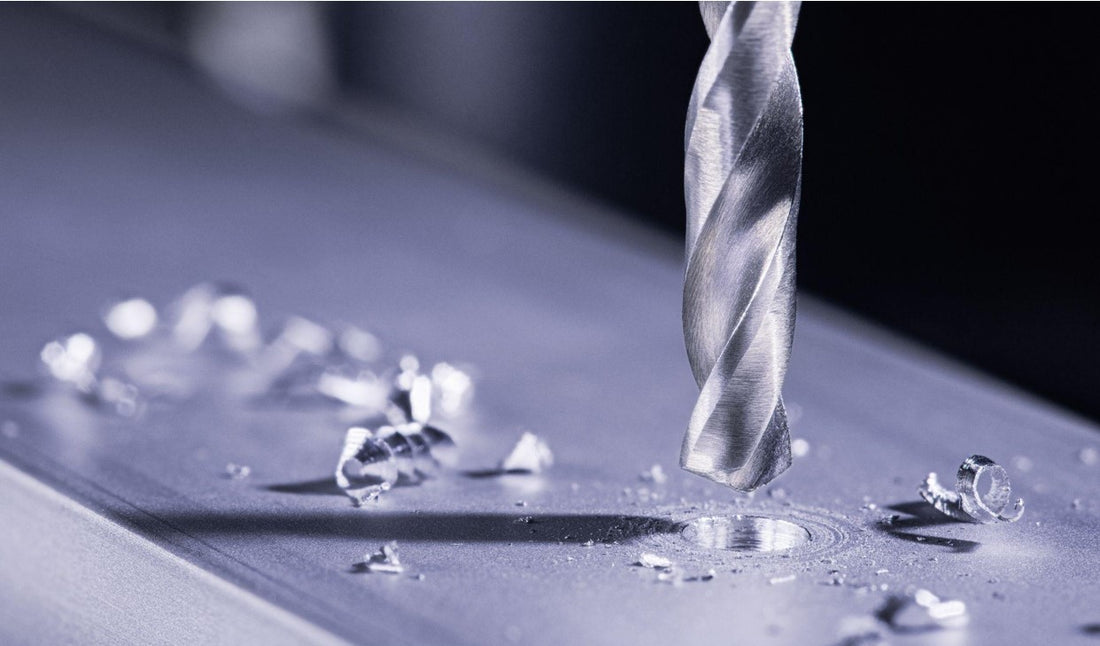Introduction to Drill Bits
A drill bit may be one of the most common tools in anyone’s power toolbox. To make the right drill holes, you’ll need various drill sizes and shapes to get the job done.
Drill bits are used in various home DIY applications, like woodworking, construction, and more. Different drill bits are used for certain materials and can achieve different things, so it is essential to know the material you are working with and what specific holes you’ll need to drill.
The right drill bit will make the correct holes in the material you’re working with. It’s essential to use the right power drill settings and drill bit to make the correct hole, allowing the rest of the construction work to go smoothly.
A well-measured drill hole allows for easy installation of wiring, plumbing, and fastener installation. This way, your project leads to great results and less potential damage to the drilled material.
Make sure to take your time when drilling and pick out the right drill bit and tools for the project. In this article, we’ll go through the basics of drill bit types and what you need to know.
Common Types of Drill Bits

There are a few common types of drill bits to be aware of. Our line of products offers a variety of drill bits to choose from.
Some common drill bits include:
- Twist bits, the most basic type of drill bit, are typically used for metal, plastic, and wood materials
- Masonry drill bits, which are used for drilling into concrete
- Spade drill bits, used for drilling large holes in wood
- Step bits, used to create stepped holes or countersink holes in metal
- Taper drill bits, used for drilling into metal at a specific angle
- Flat wood bits
- Auger bits
- Cobalt bits
- HSS bits
Specialty Drill Bits
Some specialty drill bits include:
- Brad point drill bits, which are used for drilling into wood and provide a clean, accurate hole
- Forstner bits
- Hole saw bits
- Tungsten carbide insert (TCI) bits
- Diamond bits
Choosing the Right Drill Bit for Your Project
There are some essential factors to consider when choosing the right drill bit for your project.
The first factor is the material that will be drilled. Ensure that it is in working condition, your workstation properly secures the material, and the material isn’t cracked or splitting.
The second factor to consider is the size of the hole you’ll be drilling. This determines which drill bit you’ll need to make the hole.
You’ll also need to consider the speed and force the power drill will have on the working surface. Make sure to keep a steady hand and not to force the drill bit into the material, as this can cause splitting.
Tips for Extending the Life of Your Drill Bits
To extend your drill bits' life, ensure you are taking care of your power drill tool first. Use the correct speed when drilling holes, and operate the tool safely to ensure its longevity.
Sharpen them when they become dull and weathered, and store them in a toolbox in a dry place. Most drill bits are made of metal and are prone to rust, so ensure they are dry before storing.
FAQs
How do I sharpen a twist drill bit?
Drill bits are usually made of carbon steel, cobalt, diamond, and stainless steel. They’re built to last, but they will need sharpening or replacing altogether.
This video tutorial offers a step-by-step process of sharpening a twist drill bit. Use a sharpening tool for the best result. Sharpen the drill at its proper point angles, resharpening the flute angles and keeping the points sharp and consistent.
What is the difference between HSS and cobalt drill bits?
An HSS drill bit is a heat-resistant bit that is hard-wearing, meaning it can go through a lot of wear and tear before you need to replace it. An HSS bit is built to last and can perform at higher speeds than other bits, making it great for hardwood and metalwork.
This drill bit is built with chrome, nickel, and stainless steel, giving it durability. It can be challenging to sharpen an HSS bit, and you may need to see a specialist to get it sharpened.
Meanwhile, a cobalt drill bit is made from steel with a small cobalt concentration. Since cobalt has a high melting point, this drill bit can withstand high temperatures and is strong for any drill work. A cobalt drill bit can perform at higher speeds than an HSS drill bit and is built to last longer periods without breakage.
If you’re working in hot temperatures or tough material or need to use the drill for long periods, a cobalt drill bit may be your best option.
Can I use a masonry drill bit on wood?
A masonry drill bit is used primarily for work on brick and hard stone materials and not for wood. While it can technically work, using masonry drill bits will result in a ragged hole that isn’t as smooth of a finish as a wood drill bit.
How do I know which size drill bit to use?
The size of the drill bit you need to use depends on the diameter of the hole you need to drill, and the drill bit should be the same size as the wall anchor. The drill bit should be slightly bigger than the diameter of the screw. Aim for a drill bit that is 0.5 mm larger than the screw.
What are TCI bits used for?
Titanium bits are suitable for drilling steel, iron, aluminum, wood, and magnesium. Titanium bits are great for general-purpose drilling in a production environment because they drill quickly.
Visit ecenrodewelds.com today!


